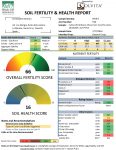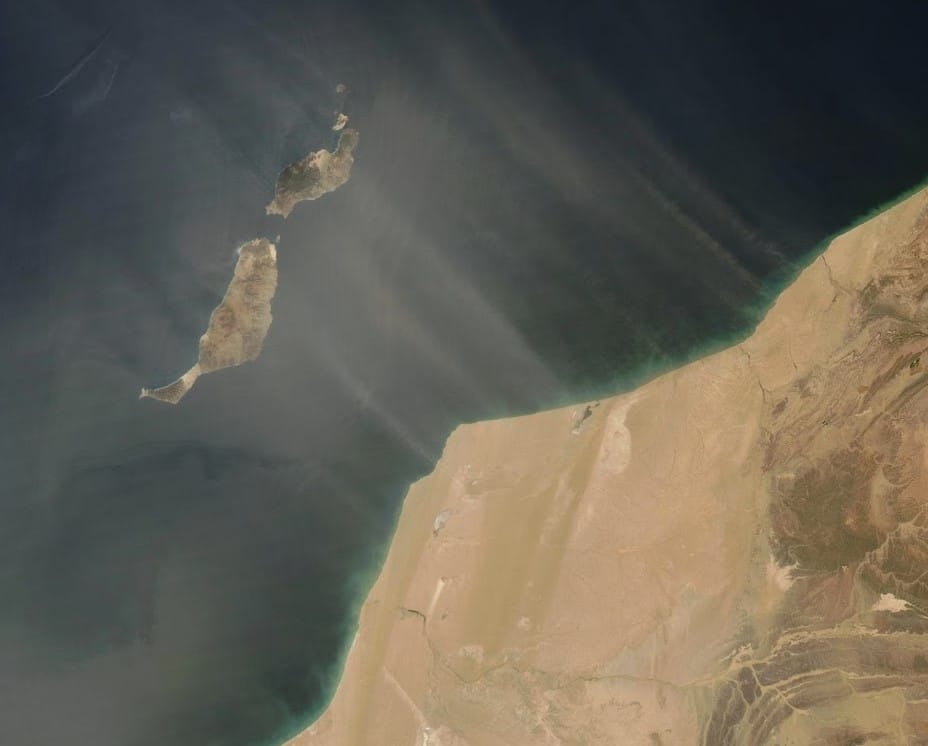Soil-destructive practices combined with the strong winds sweeping across Morocco and the Western Sahara are responsible for depositing soil in many countries around the Mediterranean and also out into the Atlantic ocean. Italy has a program to monitor the annual, measurable depositions of “dust bowl” soil from Africa and so does the Spanish Canary Islands, which range from 500-1,000 miles off the coast of Africa. There, unfortunately, the rich soil is mostly viewed as a nuisance requiring residents and hotels to erect dust barriers on the windward side.
In a satellite image (above) taken in 2015, “Calima” winds are carrying soil from the NW coast of Africa out onto the Canary Islands. We characterized the soil health of the wind-blown material.
What is the quality and nature of the soil? We recently collected a sample by taking the deposited layer from a farm on the southeastern cost down from Montaña Roja on Tenerife. We ran our normal Soil Health Tool on the sample. We rated the Overall Fertility Index of the soil – a combination of ranking soil nutrients for desired productivity combined with accounting for biological and physical features in soil health.
 The overall score was 66 and the biological index (soil health score) which combines respiration, aggregate stability, SLAN and organic content, was medium at 16 against a possible range up to 50 (rare for most soils). What was noteworthy was the elevated levels of potassium, phosphate, nitrate and sodium found in the wind blown matrix, making it appear to be of a greenhouse soil quality (paste salinity was 1.2). Even more surprising was the OM of 3.5% and CO2-respiration of 94 mg/kg as CO2-C. The soil is “ready to go” as far as productivity is concerned but needs salinity management. It is something of a mystery where all the nitrate in the air-borne material is
The overall score was 66 and the biological index (soil health score) which combines respiration, aggregate stability, SLAN and organic content, was medium at 16 against a possible range up to 50 (rare for most soils). What was noteworthy was the elevated levels of potassium, phosphate, nitrate and sodium found in the wind blown matrix, making it appear to be of a greenhouse soil quality (paste salinity was 1.2). Even more surprising was the OM of 3.5% and CO2-respiration of 94 mg/kg as CO2-C. The soil is “ready to go” as far as productivity is concerned but needs salinity management. It is something of a mystery where all the nitrate in the air-borne material is
coming from, but its like “fertility from the sky”.

